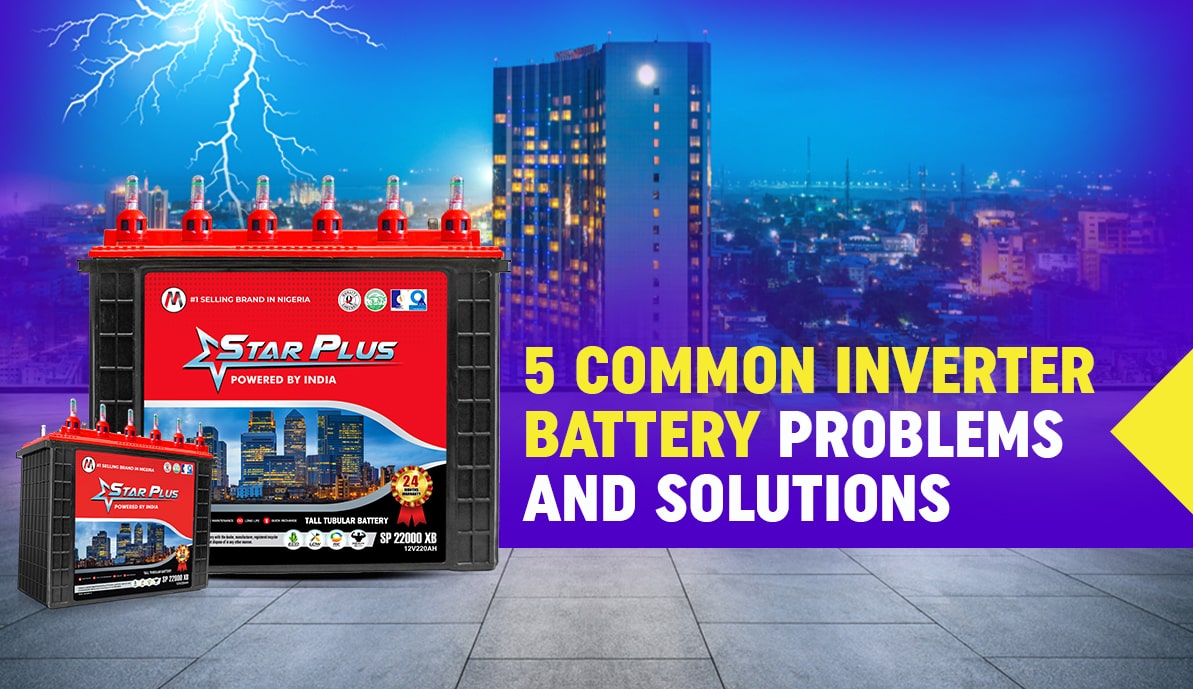In the modern world, our daily lives are so dependent on electrical and smart devices that it’s almost impossible to imagine a day devoid of electrical power. Enter the inverter battery, a meticulously designed solution aimed at ensuring a prolonged supply of electricity. These, along with inverters, are reliable power backup systems that play a pivotal role by converting Direct Current (DC) into Alternating Current (AC), thereby powering our electrical appliances.
However, what if the very device meant to provide us with uninterrupted power faces challenges? The uncertainties surrounding inverter batteries can result in several issues, ranging from a lack of lighting to the inability to operate essential appliances like microwaves.
This article aims to delve into common problems associated with a high backup tubular battery and provide practical solutions to empower you with the necessary knowledge. Read on to gain insights into troubleshooting these issues.
Inverter Not Turning On
One of the most prevalent issues with inverters is their refusal to turn on. Causes for this problem can include a tripped inverter, disconnected battery, loose battery terminals, a weakened or depleted battery, or reversible battery terminals. If the power switch is faulty, it’s advisable to take it to a service center for repairs. In case of a tripped inverter, pressing the device’s trip reset button may be necessary to restore functionality.
Want to Buy Tubular Inverter Battery for Your Home and Office?
Charging a long-lasting tubular battery for several hours is recommended if it has weakened, and replacement is advised for outdated batteries. Check for terminal corrosion, tighten loose terminals, and clean them before use.
Inverter Battery Not Getting Charged
A situation where the inverter battery is not getting charged may stem from a dead battery, burnt rectifiers, melted fuses, or loose connections. In such cases, seeking professional assistance for checking or replacing these components is advisable.
Shortened Backup Time
Many users encounter the problem of shortened backup time, often due to excessive power consumption or improper charging of the inverter battery. To address this issue, reducing the excessive load is crucial. Additionally, if the battery has lost electrolyte, leading to a shortened backup time, regular topping up with purified water is recommended, keeping the water level between the maximum and minimum limits.
Battery Not Connected
Inverters may malfunction due to loose or no battery connections. Reconnecting the battery to the inverter and switching it on can resolve this problem, ensuring smooth functionality.
Weak or Faulty Inverter Battery
When inverter batteries exhibit suboptimal performance, the culprit could be faulty or dead batteries. Regularly replacing batteries is crucial to ensure the effective and uninterrupted functioning of your inverter, providing power 24/7.
Now armed with knowledge about these common problems and their solutions, you can confidently address these situations independently. Maintaining your inverter and high backup tubular battery in peak condition, ensuring they are fully charged, will guarantee a seamless power supply to your electrical devices even during unexpected power cuts.
What to Do if Your Inverter Does Not Turn On
If your inverter refuses to turn on, there could be a few reasons behind it, and here’s what you can do to troubleshoot the issue:
Firstly, check the power source. Connect the inverter properly to a power source, whether it’s the main grid or a battery. If connected to the grid, check for power outages or a tripped circuit breaker. If using a battery, make sure it’s sufficiently charged.
Next, verify the power switch on the inverter. Sometimes, it might have been accidentally turned off, so ensure it’s in the “on” position.
Inspect the fuse or circuit breaker. Inverters typically have these safety features. Check if the fuse is intact or if the circuit breaker has tripped.
Examine the battery connections. Ensure they are secure and free from corrosion, as loose or faulty connections can prevent the inverter from turning on. Clean the battery terminals and tighten the connections if necessary.
Lastly, look for fault indicators. Some inverters have LED indicators displaying error codes. Check for any illuminated or blinking indicators, referring to the user manual for guidance on identifying and addressing the issue.
By staying proactive in identifying and resolving inverter battery issues, you can ensure a continuous and stress-free power supply, enhancing the efficiency and longevity of your electrical devices.
Conclusion
Star Plus Battery is one of the leading inverter battery manufacturers in Nigeria. Our robust and long-lasting inverter batteries with advanced design can satisfy multiple power needs. Our inverter batteries come with a good warranty span and unmatched results and helps users to receive uninterrupted power supply. Even the best inverter battery might need replacement after a considerable number of years. Connect with us today for a quick inspection of your battery and guidance for proper replacement.



0 Comments